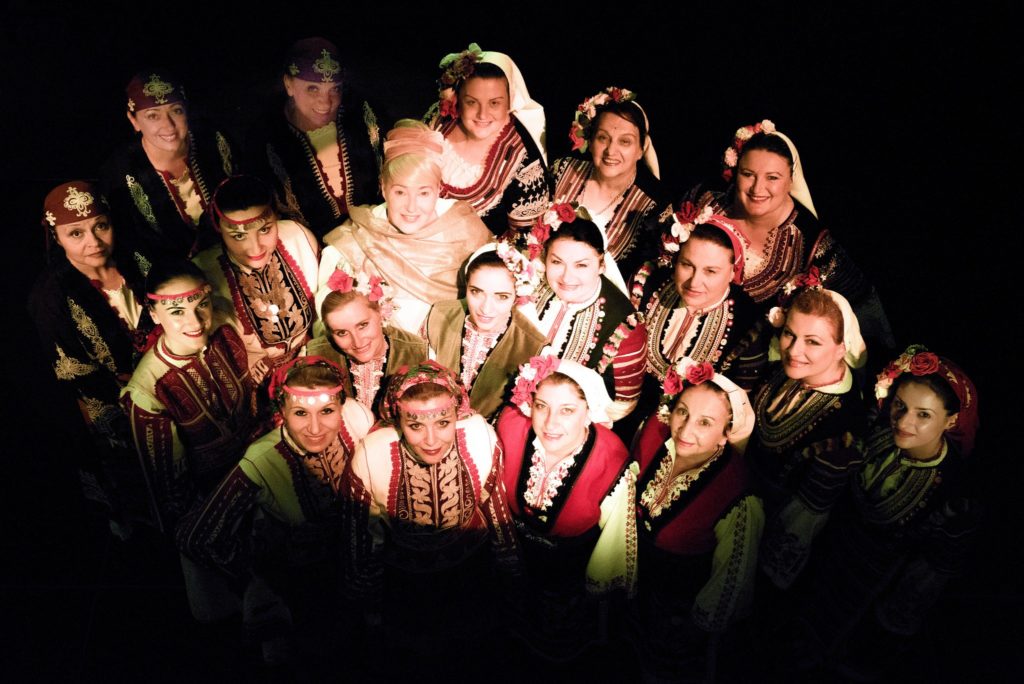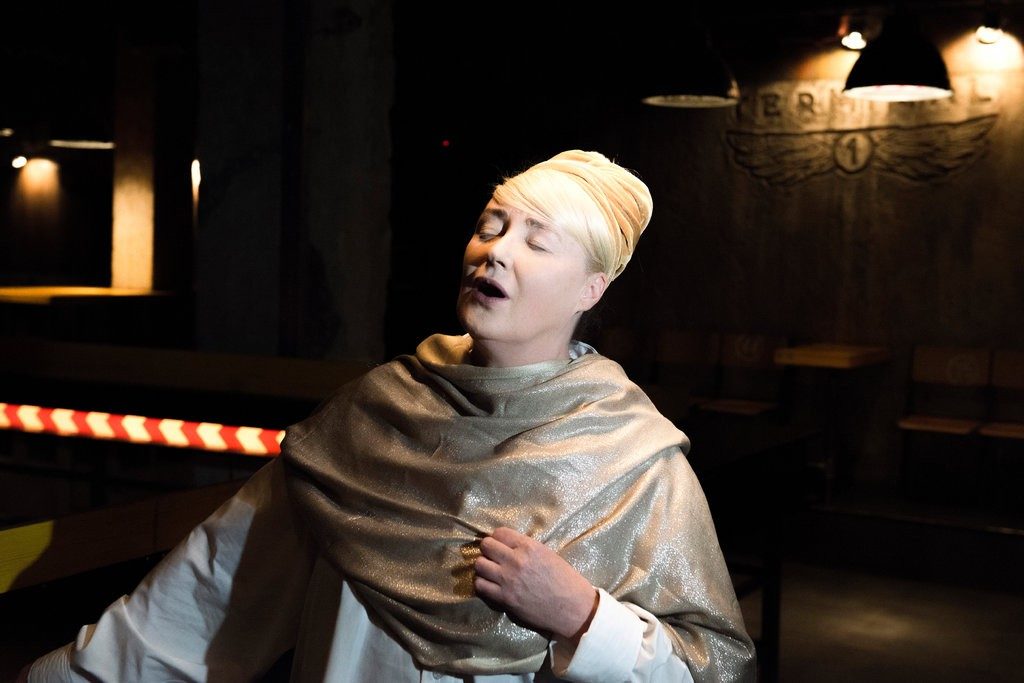Thirty-one years ago, a recording by an all-female Bulgarian choir singing in a thousand-year-old style somehow wound up selling a startling 500,000 copies in the United States.
The mysterious breakthrough of the group’s self-titled album, “Le Mystère des Voix Bulgares” (“The Mystery of the Bulgarian Voices”), coupled with the release of Paul Simon’s “Graceland,” helped usher in a “world music” movement. A follow-up album from the women bagged a Grammy in 1989, and they toured to sold-out crowds around the world.
“The whole appeal was in their a cappella singing,” said Robert Hurwitz, who paid only $8,000 to license the original “Le Mystère” album in America for Nonesuch, the label he then led. “The purity of their sound was thrilling.”
Now, after more than two decades away from the studio, the choir is returning — but with a sound that isn’t quite so pure. Their comeback release, “BooCheeMish,” matches the choir’s folkloric harmonies to multitudes of instruments, not all of them traditional. It also includes collaborations with a singer and songwriter who comes from a wholly different style and culture: Australian-born Lisa Gerrard of Dead Can Dance. Oh, and there’s a hip-hop beat boxer in the mix. (SkilleR, a.k.a. Alexander Deyanov).
The man who worked on arranging and composing the new music, Petar Dundakov, knows he’s about to face considerable skepticism from old fans, but he remains undaunted. “We want to broaden the sound to find a new audience,” he said. “We don’t want to stay in a museum. The deep question is, can you move folklore forward.”
Ms. Gerrard emphasized that she, and the choir’s other new collaborators, took pains not to corrupt the women’s essential sound. “We’re walking toward them, not the other way around,” she said. “If anybody is changed by this, it’s me.”
The choir actually began changing how Western listeners heard harmonies far earlier than the ’80s. In 1966, a recording from the choir, on which they performed updated arrangements of traditional folk tunes from the conductor Filip Kutev, was released on Nonesuch’s “Explorer” series and sold more than any other album on that imprint. Stars like Frank Zappa, David Crosby and Graham Nash repeatedly marveled over their vocal techniques in interviews, fueling interest in the release. Then, in 1975, the Swiss ethnomusicologist Marcel Cellier released a cassette of the choir on his own label, based on field recordings he had made since the 1950s. That’s the recording Mr. Hurwitz came across in a Parisian record store in the 1980s.
“It took about 10 seconds to realize it was something I really adored,” he said.
While he licensed the album for America, the edgy British label 4AD snapped it up for that country, where it promptly sold over 100,000 copies. Ms. Gerrard, who recorded for 4AD at the time, first heard the women with that release. “They were like lights, full of hope against any adversity,” she said. “They created a cathedral in the mouth.”
While she couldn’t reproduce their complex sound (“I nearly broke my voice trying,” she said), the music influenced pivotal songs she wrote for Dead Can Dance like “The Host of Seraphim.” Despite all the exposure the women enjoyed at their peak, the collapse of the Communist government in Bulgaria at the end of the ’80s put them in a precarious position. Since 1952, the choir had been funded by the government, which gave them steady exposure on state-run TV and radio stations. “The government supported professional folk artists in order to build a community identity for a socialistic society,” Mr. Dundakov said.
Forced to compete in the free market, many of the women had to take jobs teaching singing to scrape by. While the choir continued to tour over the last 20 years, there wasn’t money for a recording until funding was found by the album’s executive producer, Boyana Bounkova. To help flesh out the music, she hired Mr. Dundakov, who has written jazz and electronic music, as well as modern classical compositions. He contacted a host of Western singers about collaborating with the choir, which includes two women from the 1980s recordings. But only Ms. Gerrard proved suitable.
In her work with Dead Can Dance, as well as on solo releases and soundtracks for films like “Gladiator,” she had sung in an otherworldly style, often employing a self-created language. Even so, Ms. Gerrard says, she had “a huge learning curve.”
“I didn’t try to copy them, because I can’t,” she said. “With Western Bel Canto singing, it’s from the diaphragm, the belly and the head. With Bulgarian singing, it’s from the chest. It’s not a voice that’s trained. It’s a natural voice.”
While other stars have used the sound of the choir in the past — from a collaboration with Kate Bush in the ’80s on three songs (“Deeper Understanding,” “Never Be Mine,” and “Rocket’s Tail”) to a more recent sample in a song by Jason Derulo — Ms. Gerrard feels the women had previously been used “as wallpaper.” For his part, Mr. Dundakov worked hard to write, or arrange, songs for the choir that sounded strikingly different from those created by Mr. Kutev on earlier recordings. He retained many traditional instruments, like the kaval and gadulka, and also made the decision not to have any modern drums or electric instruments. He admits “there were a lot of doubts” about adding a beat boxer, but ultimately decided that the hip-hop technique is “part of the folklore of the 21st century” Also, “it all happens in the mouth,” like the choir’s singing.
Given all the trial and error, it took three years to complete the album, which its creators named for a local flower that grows between rocks. They view the title as a metaphor for music they believe blooms between cultures. “There is something in the heart of human beings that desires to be understood, and not necessarily through words,” Ms. Gerrard said. “Language can trap you. We want to share this music with the world to show that we’re not so far away from each other.”


